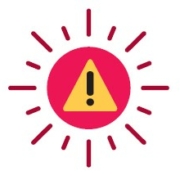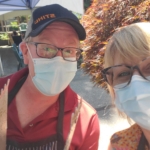Keeping Safe in the Heat – Extreme Heat
Keeping Safe in the Heat
Staff who are required to continuously wear PPE during extreme heat events—may face risks from heat stress, particularly in places of work that may not be air-conditioned or adequately ventilated. Be very aware of what you are experiencing in the heat.
Warning Signs of Heat Exhaustion
- High body temperature
- Excessive sweating
- Dizziness
- Lightheadedness
- Confusion
- Loss of concentration
- Increased irritability
- Darkened or decreased urine
- Increased thirst
- Swelling
- Headache
- Rapid breathing and heartrate
Preventative Measures
- Wear loose, lightly coloured, and lightweight clothing
- Drink lots of water
- Take micro-breaks often
- Stay informed and plan ahead
- Avoid strenuous work and activities
- Check in with yourself and others
- Ensure fans or air conditioning (if available) are working properly
- Consider a misting station or rest areas with air conditioning, fans, or shade
Heat exhaustion can accelerate into heat stroke which may include dry skin that doesn’t sweat, delirium, loss of consciousness, trouble breathing, low or high blood pressure, or seizures.
If Showing Signs of Heat Exhaustion
- Move to a cooler, shaded location
- Stop physical activity
- Remove heavy, tight, or extra clothing
- Apply cool, wet cloths, or spray with water or use icepacks if tolerated
- Drink cool fluids
- Seek first aid
If Showing Signs of Heat Stroke
- Call 911 – heat stroke is a medical emergency
- Move to a cooler, shaded location
- Remove heavy, tight or extra clothing
From SafeCareBC



